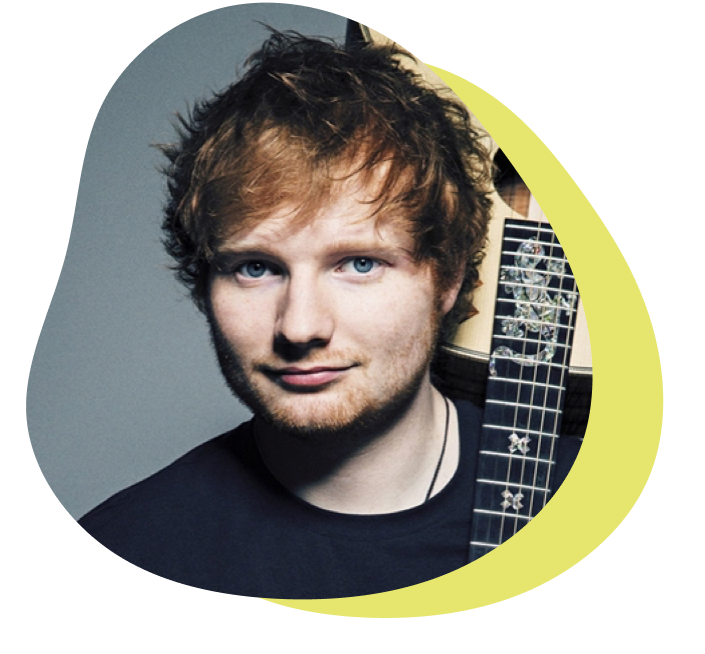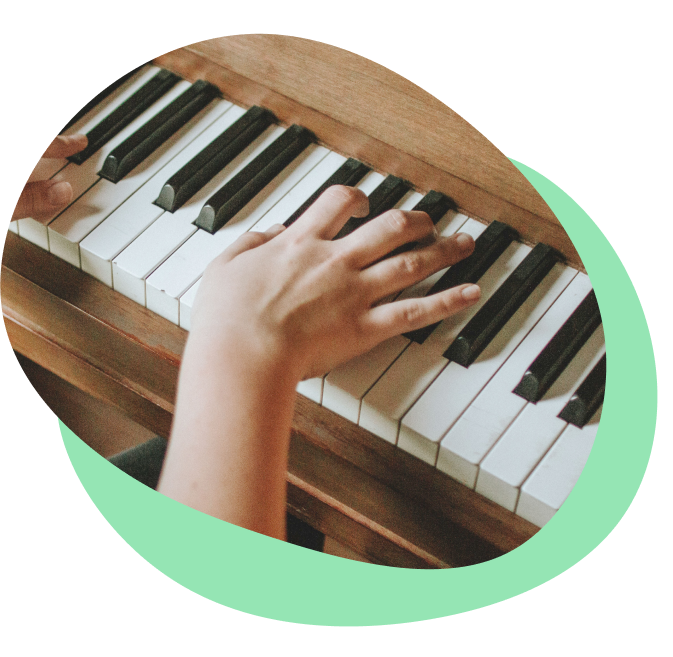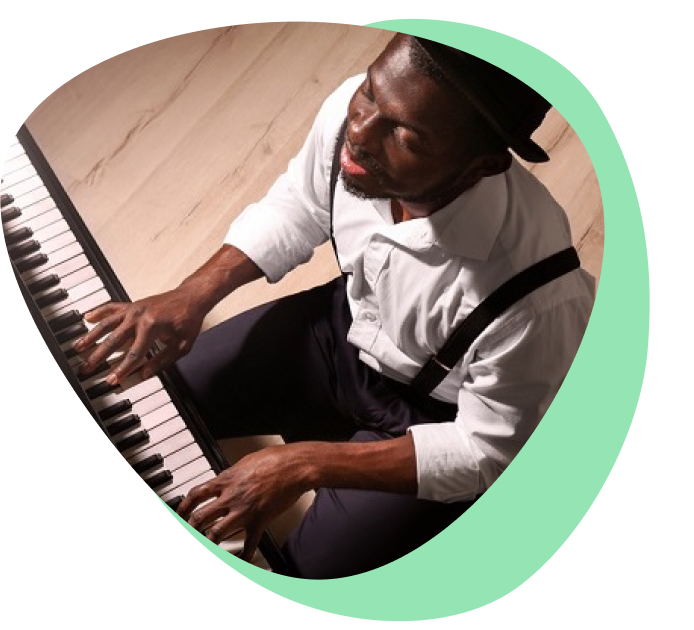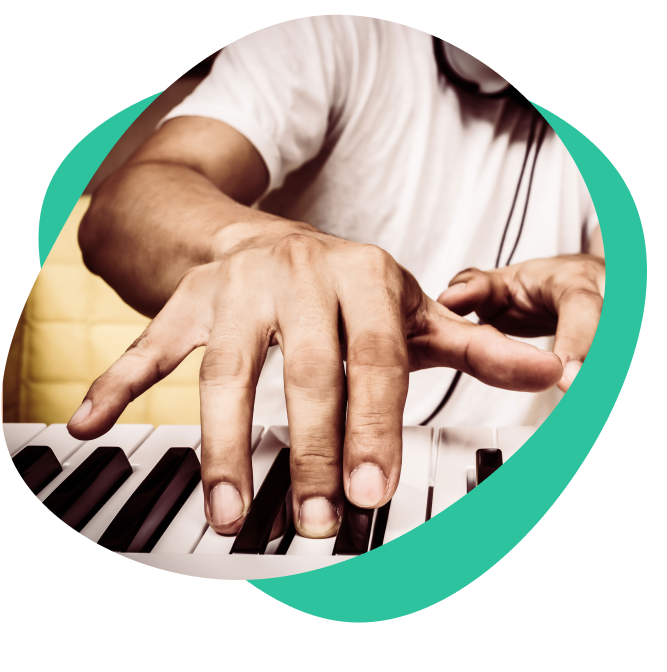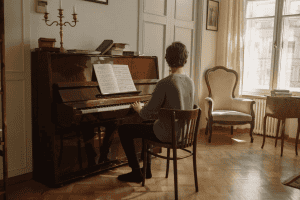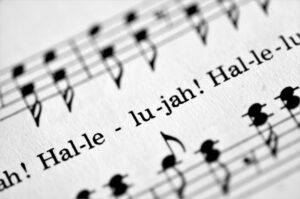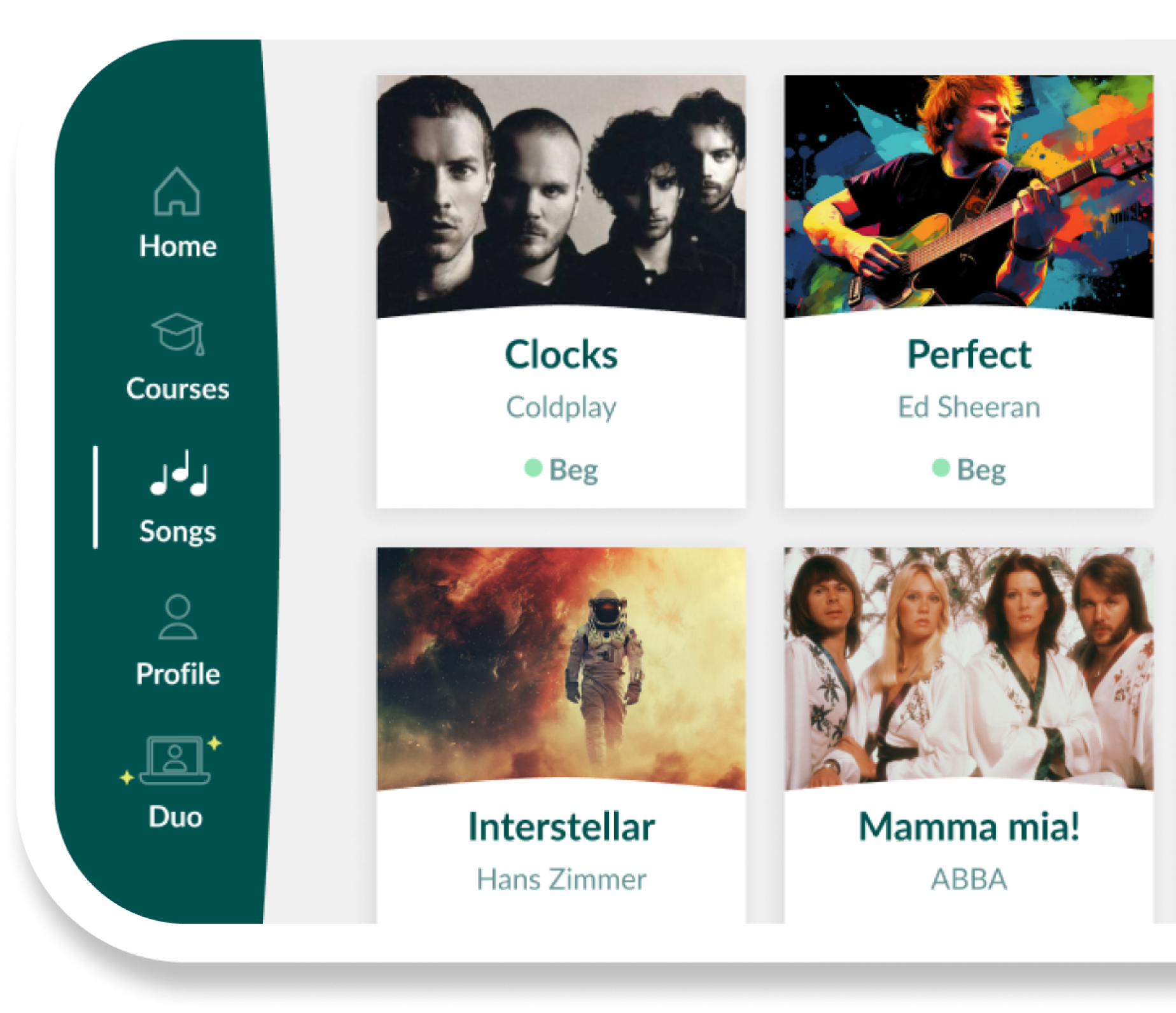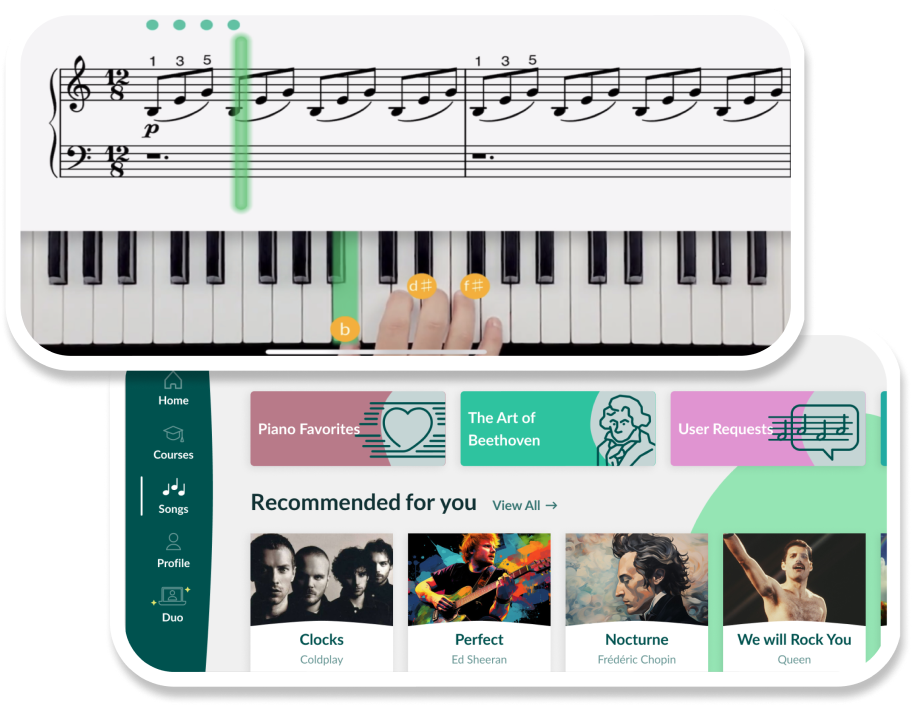
Do you know?
James Cameron, the director of the film, Titanic didn’t want a song for the film. James Horner wrote and recorded it without telling Cameron and presented it to him complete. Upon hearing it, Cameron changed his mind!
Are you ready to bring the Titanic theme to life on your keys? In this step-by-step guide, we’ll learn My Heart Will Go On on piano the easy way. This easy piano song is perfect for beginners, parents practicing with kids and early intermediates who want clear, gentle guidance.
With Skoove, you won’t just read, you’ll play. We’ll show you the My Heart Will Go On piano notes with simple finger numbers and keyboard diagrams, then add easy left-hand notes when you’re ready. With the Skoove app to get real-time feedback as you learn the full My Heart Will Go On piano music at your own pace.
“My Heart Will Go On” piano notes and finger positions
Let’s start with the melody notes. We’ll keep things in C major so you only need the white keys. You’ll hear how close it sounds to the original right away.
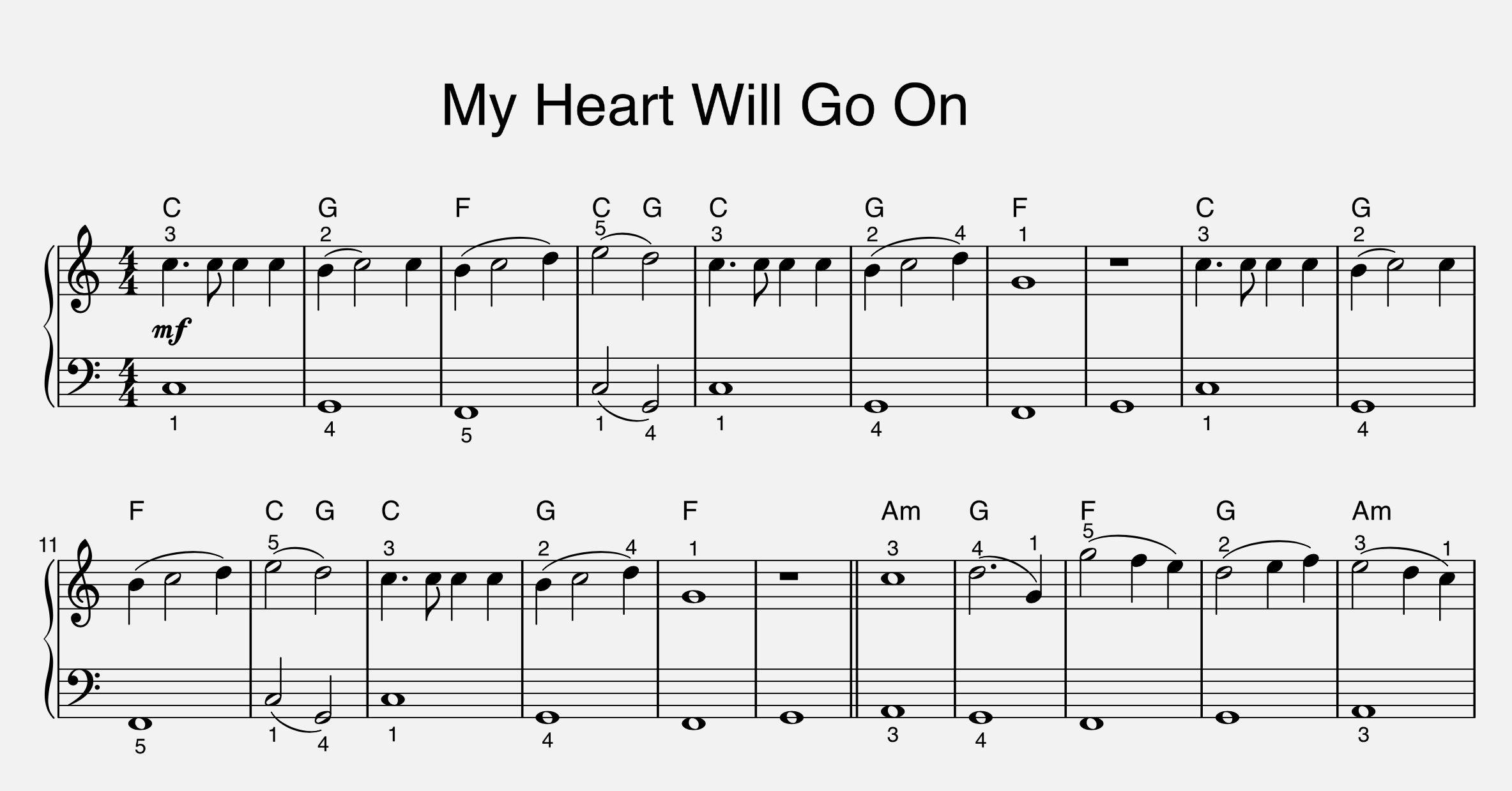
Let’s break it down hand by hand.
“My Heart Will Go On” piano notes in the right hand
We’ll start by setting up your right hand. Place your middle finger (3) on C, then let your other fingers rest naturally on the nearby white keys.
This hand position covers the first line of the song.
The opening melody goes like this:
C(3) – C(3) – C(3) – C(3) – B(2) – C(3) – C(3) – B(2) – C(3) – D(4) – E(5)…
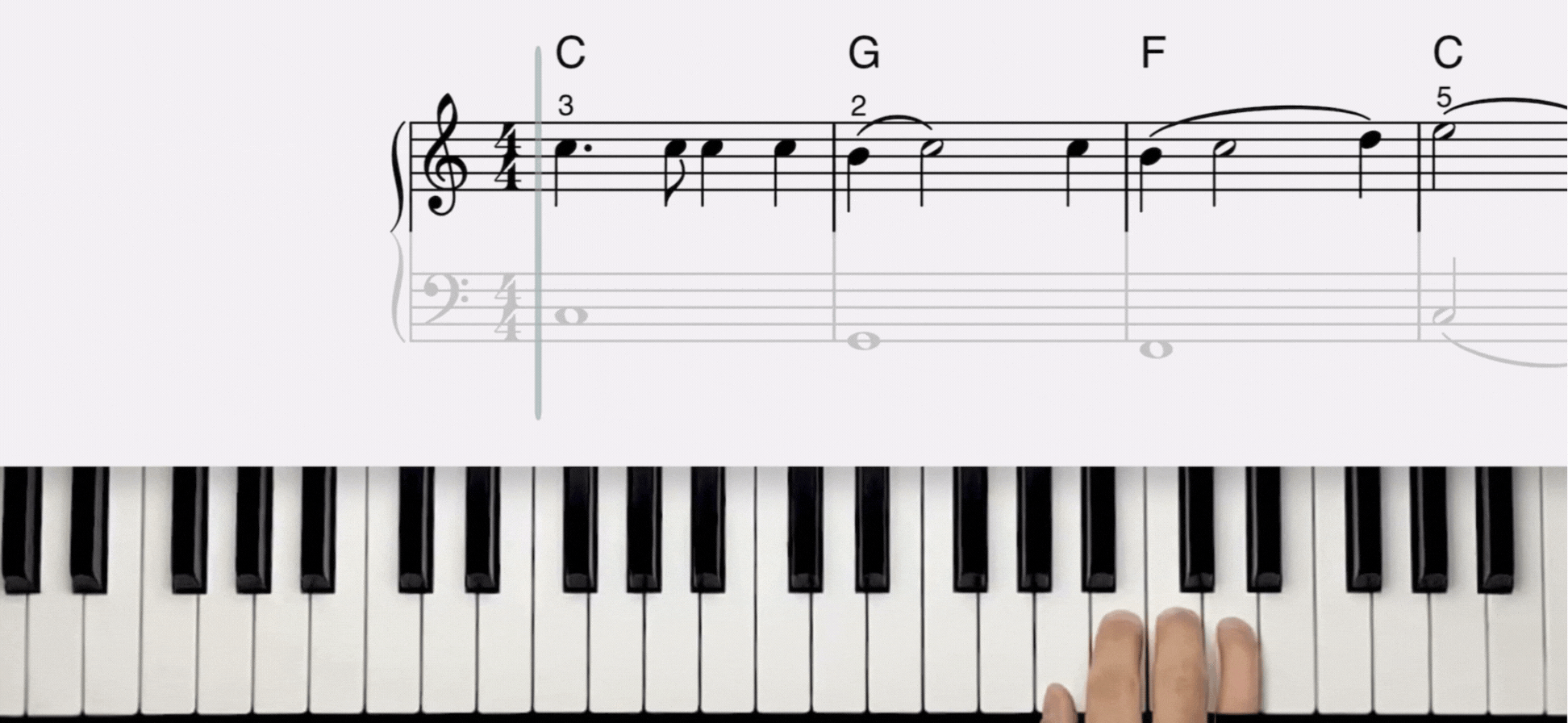
Play this slowly and evenly with your right hand. Keep your fingers relaxed and let each note connect smoothly to the next. The rhythm is gentle, so don’t rush.
“My Heart Will Go On” piano notes in the left hand
For the left hand, we’ll use a simple bassline to support the melody. Don’t worry about playing full patterns yet, just press the root note or the basic chord when the symbol changes.
Place your left thumb on the F below middle C and let your fingers fall naturally over the consecutive white keys. The note order goes like this:
C(1) – G(4) – F(5) – C(5) – G(1)
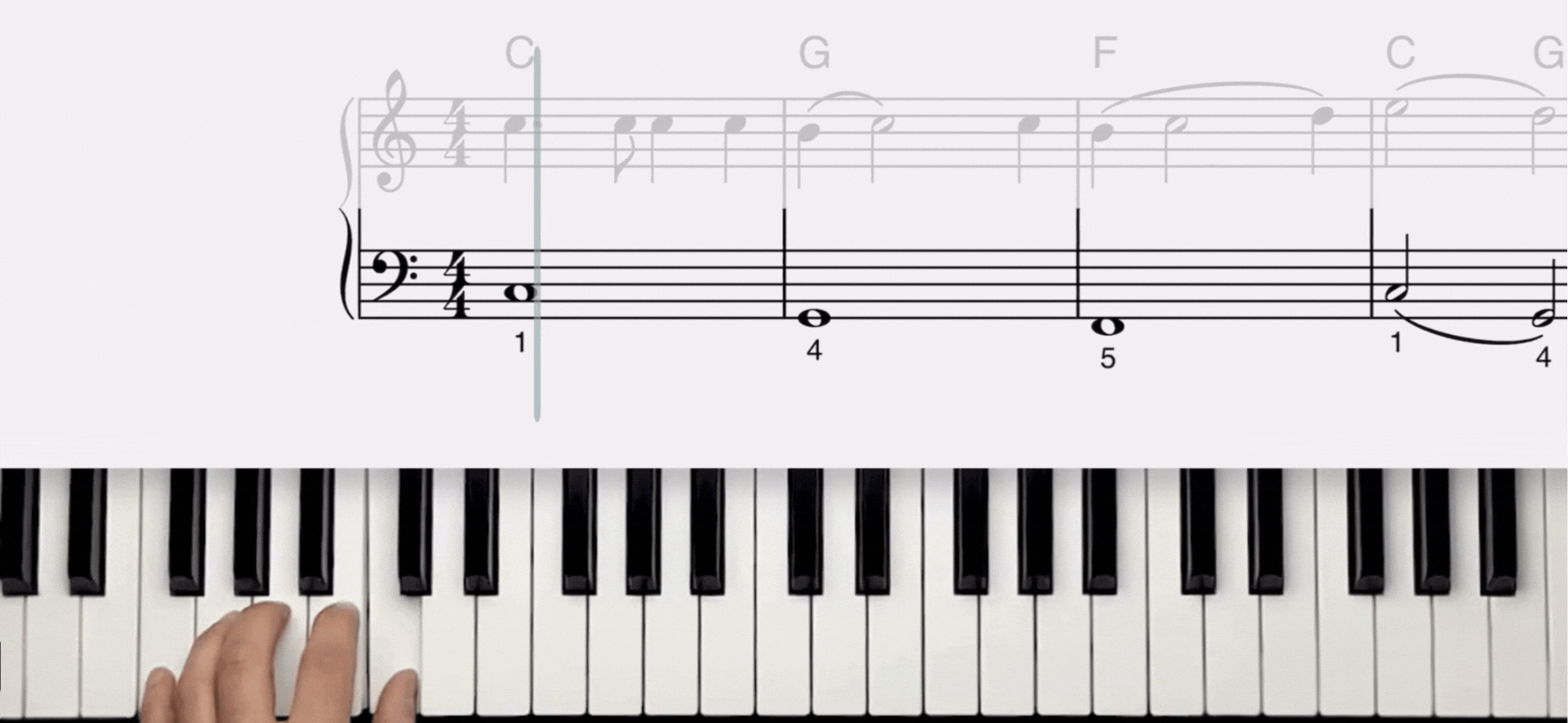
If you’re just starting out, playing only the root note of each chord is enough to make it sound complete.
How to play “My Heart Will Go On” on piano?
Playing with both hands might feel tricky at first, but if you keep a slow tempo and steady rhythm, the melody and harmony will soon start to flow naturally.
Start with your right hand playing the melody:
C – C – C – C – B – C – C – B – C – D – E
Then add your left hand with our simple bassline:
C – G – F – C – G
The key is to hold each note in the left hand while your right hand plays through the phrase. When the melody moves to the next section, change your bass note. Don’t worry about speed, focus on making the notes clear and even.
Want to see it in action? Watch the tutorial video where we show you exactly how to place your hands, which notes to press and how the bass and melody fit together. Seeing the finger positions in real time and hearing how each part should sound will make learning much easier.
Practice Tips for “My Heart Will Go On”
Learning My Heart Will Go On is a wonderful achievement, but like any new piece, it becomes easier with the right practice approach. Here are some tips to help you play with confidence:
- Start slow and steady – Don’t rush into full speed. Play the melody and chords at a slow tempo until both hands feel comfortable. Smooth and relaxed playing always comes before speed.
- Tackle the repeated E’s first -The melody starts with four C’s in a row. Practice them with an even touch, like gentle heartbeats. Once this feels steady, sliding down to B and back up to C will come naturally.
- Practice hands separately – If both hands together feel overwhelming, spend a few minutes with just the right-hand melody, then the left-hand chords. When each feels natural on its own, bring them together.
- Use short practice sessions – Ten minutes a day is more effective than one long session once a week. Small, regular practice builds muscle memory and makes progress stick
- Hold left-hand chords longer – Instead of changing your left hand too often, let each chord ring while the right hand plays through its phrase. For example, hold the C major chord while you play the opening E’s. This gives the song its flowing, cinematic feel.
- Listen and sing along – Humming or softly singing the melody while you play this piano song helps connect the notes to the familiar tune in your head. It keeps you in rhythm and makes the music more enjoyable.
By focusing on these little details, you’ll save practice time and quickly make the song sound smooth and confident.
Cheat sheet
| Artist | Celine Dion |
| Composer | James Horner |
| Release year | 1997 |
| Genre | Pop |
| Difficulty level | Beginner |
| Instrument | Piano |
| Key | C major |
| Meter | 4/4 |
| Techniques | Melody with bass notes |
Keep your piano journey going
By now, you’ve discovered how a few simple patterns can create one of the most emotional melodies ever written. With patience and steady practice, this song will soon flow under your fingers and sound just as moving as you remember it from Titanic.
However, this is only the beginning. Skoove makes learning My Heart Will Go On on piano easy , you can keep improving step by step. The app gives you interactive lessons and hundreds of piano songs to explore, from classics to modern hits. It’s like having a supportive teacher by your side, guiding you through every new piece.
Author of this blog post:
Matthew Dickman

With over a decade of experience in music education Matthew holds a BA in Music from Paul McCartney’s LIPA and an MA in Composition from the University of Salford. Mathew has developed a distinctive compositional voice and approach to music theory education through his research and work in the music industry. Matthew’s writing for Skoove combines experience from orchestral and media composition, and as a gigging jazz musician, to create a wholistic and accessible pedagogy for musicians of any level. Away from music, he enjoys reading and exploring nature to expand his horizons and knowledge contributing to his holistic teaching style.



